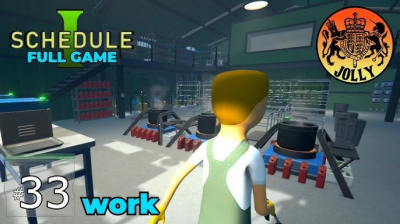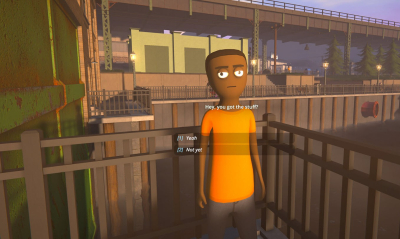Schedule I
Schedule I: A Narrative Experience That Will Keep You Guessing Until the End
As someone who dives into games primarily for their stories, I’m always hunting for titles that promise a gripping narrative or an unpredictable turn of events. Lately, it’s felt like many horror games stick to safe formulas: haunted houses, creepy forests, or asylums filled with obvious dangers. Schedule I, however, instantly caught my attention with its mysterious premise and cryptic title. I wasn’t sure what to expect — and that uncertainty became one of the game’s greatest strengths.
A Mysterious Beginning Without a Map
The game wastes no time setting its unsettling tone. From the moment it begins, you’re thrown into a strange, undefined environment with no introduction or tutorial to guide you. There’s no text log explaining your purpose, no hints about what you’re supposed to achieve. Instead, Schedule I places you in the middle of a bizarre, shifting world where every step forward feels uncertain.
This type of open-ended start appealed to me right away. I’ve always enjoyed stories that challenge you to piece together the truth from scattered fragments, and this game thrives on ambiguity. It reminded me of those books or movies where you don’t fully grasp what’s happening until you’ve reached the final page — and even then, you’re left wondering.
An Atmosphere That Tells Its Own Story
Visually, Schedule I goes for a minimalist, retro-inspired look. Some might call it primitive, but for me, it worked perfectly. The deliberately crude environments evoke a feeling of stepping into a lost, half-finished digital world — the kind you shouldn’t be exploring, yet can’t resist.
The real star here is the sound design. There’s a deliberate sparseness to the audio that makes every faint noise matter. A sudden echo in an empty hallway, the low hum of an unseen source, or a brief, eerie glitch in the soundtrack — all of it combines to suggest that something isn’t quite right. Even without enemies or direct threats, I found myself constantly on edge.
What’s impressive is how much story is conveyed through these small details. Rooms are designed in ways that hint at past events. Scribbled messages, flickering lights, and impossible spaces all serve as narrative clues. There’s no need for cutscenes when the environment itself is speaking to you.
A Story Built on Hints and Interpretations
If you’re the type of player who prefers clear objectives and a neatly tied-up ending, this might not be your thing. Schedule I doesn’t deliver its narrative in a conventional way. Instead, it offers fragments of a larger, possibly tragic story — one you’ll only ever glimpse parts of.
As someone fascinated by layered plots and unreliable narrators, I found this storytelling method captivating. I kept asking myself: What is Schedule I? Is it a place, a state of mind, a metaphor? Or perhaps some twisted experiment gone wrong? The game drops enough hints to spark countless theories, and it’s that mystery that drove me to see it through.
On my second playthrough, I noticed subtle changes and new details I missed before, which gave me even more pieces to this unsettling puzzle. It’s rare for a game this short to encourage replayability purely for narrative discovery, but Schedule I achieves it effortlessly.
Gameplay That Serves the Story
Mechanics-wise, the game stays minimalistic. You won’t find puzzles, action sequences, or inventory management here. You move, observe, and occasionally interact with your surroundings, though often in ways that feel deliberately obscure.
What matters is how this simplicity feeds the story’s pacing. There’s no distraction from what’s happening around you. Every small action feels deliberate, as though it might trigger some major shift in the world — and sometimes it does.
I liked that sense of unpredictability. Not knowing what the next room would hold made each discovery meaningful. It’s a slow burn, but one that’s consistently rewarding if you’re invested in unravelling its secrets.
Final Verdict
For those of us who chase immersive, thought-provoking narratives, Schedule I is an unexpected gem. It’s not about obvious scares or explosive twists — it’s about slowly peeling back layers of mystery, one uneasy step at a time. Every hallway, sound, and strange symbol contributes to a sense of creeping revelation.
It won’t be for everyone. Some players might feel lost without a clear goal, and others might crave more action. But for anyone who loves stories that leave questions unanswered and invite endless speculation, Schedule I is a quietly powerful experience worth your time.
I’m genuinely glad I stumbled across this one. It reminded me why I’m drawn to games that put story and atmosphere first — and why sometimes, the best tales are the ones you’ll never fully explain















